Children of a village while away in the courtyard of a house. They just finished off a tough ‘fight of the kites’ (paitch larhana). Kite flying is a popular game in the villages of Punjab.
Punjabi boys and girls are known to have keen interest in sports. A variety of indoor and outdoor games are played. These include Gulli-danda, Chhuppan Chhupai (Hide-and-seek), playing Bantay (Marbles), Stapu (Hopscotch) and Pugan pugai.
·
MEDA JISM VI TOON – MEDI ROOH VI TOON
·
by Nayyar Hashmey & Nidokidos
·
Though mini vans, wagons and Chingchis have gradually replaced the animal transport chiefly a tonga, (horse drawn buggy) in the cities, villagers still find tonga as a cheaper mode of transport. And being conventional transport in the countryside since centuries, they prefer its ride over auto transport.
Moreover, besides being economical, tongas are airy and not prone to atmospheric pollution as do their automotive counterparts, that daily send tons of waste gases to our atmosphere causing the deadly greenhouse gases effect.
Village dwellers are always so eager to reach their home that they would occupy any nook, any corner of a bus plying to their village. In the image above, village youth are sticking on different parts of the bus like a swarm of flies.
Some are even standing on the roof top and other sticking on the footsteps, while still there are others who find the minimum possible space anywhere just to stick on to enough width and hold on to a support anywhere to stay in tact.
Risky! yes a high risk endeavor indeed, but for villagers, the love of their home is so pressive that they would go for taking such risk every day than compelled to stay overnight in a big city.
Charpai, or Charpoy, is a traditional woven bed in Punjab. In Punjabi and Saraiki, it is called a Manjaa or Manji and consists of a wooden frame bordering a set of knotted ropes. Traditionally the user would lie directly on top of the ropes without an intervening mattress. Its making begins with the tying of a jee (Life knot) at one corner of the bed.
In Dera Ghazi Khan, a district of Punjab, the big Charpai is also called hamacha. This city has the world’s largest charpai.
The hamacha or a such large sized manja as in the picture has many diverse functions.
1. It can be used as a joint sitting when village youth get together for gossips, exchanging views about village politics, a hot topic travelling around everywhere of national and international significance (and between you and me!) also about village damsels.
2. In the evening it becomes a meeting place for a chopal, where matters of formal and informal interest to the villagers at large, are discussed.
3. The huge manja or hamacha has other functions too e.g. for holding the meeting of village council or punchayat. Since normally five village elders act either as interlocutors or as adjudicators, therefore, traditionally such village council is called a punchayat.
A punchayat handles village disputes on money matters, distribution of irrigation water, or sometimes also the matrimonial disputes between two parties of the same clan or the ones from another clan. Additionally all types of minor offences, crimes and disputes are also handled by village punchayats.
Instead of approaching the city courts where a case may take years to decide and where solicitors charge too high fees, the villagers prefer the matter to be sorted out by a local punchayat which mostly makes decision on the same day. This decision is honoured by all parties concerned.
Village councils or punchayats are now called union councils.Its members are elected through province wide local bodies elections and these are gradually taking over the role of traditional punchayats. However, the culture of manjaas till persists in the villages of Punjab.
A shepherd takes his herd back home. the scene is simply idyllic. Go and See it, Experience the interesting life our villages have……
In many villages of Punjab, jungle wood, dried bushes and shrubs, beef dung are used to prepare meals on traditional earthen or iron stoves (respectively named choolhas and angeethis). Though cooking on such stoves takes relatively longer time and is very cumbersome for the woman doing the job, yet the food cooked over the slow simmering fire, is many times more delicious than the one cooked on gas stoves.
I still recall the aroma and the taste of food prepared on such crude and cumbersome stoves by my late mother. Every thing she cooked on these stoves especially the meals and the parathas done in desi ghee were so tempting that you could not wait any longer. As a matter of fact, I still get nostalgic when I remember the food prepared on choolhas in those good old days.
Milch animals like cows, buffaloes and goats have an important role in the economy of our rural households, but more so the cows and buffaloes. They provide milk, butter and yogurt And the bovine waste which otherwise would go waste is used as fuel for the earthen and iron stoves.
In the scorching heat of Punjab plains, buffaloes regularly need to freshen up in cool waters of a village pond, hence named water buffaloes.
The rusted gate of a government run primary school in village Manji Torh, Shakargarh. Manji Torh literally means one that breaks the charpoys. May be the village used to have heavy rains in the past, which usually cause a misalignment in the frame of charpoys and is called ‘kaanrh’ in Punjabi.
The kaanrh causes a good looking normal charpoy into an ugly, awkward structure. Some experience is required to straighten this out. When done by novices, the kaanrh may result in breaking the whole charpoy. Hence such funny sounding name for the village.
[Guys, its my personal surmising. If somebody from Manji Torh village can throw more light on this subject, he is more than welcome.]
Note: The rusty gate of the school is a manifest of the neglect the government of Punjab subjects to such institutions of basic learning in the villages of Punjab. Yet in spite the neglect, many such schools have produced geniuses like Dr. Abdus Salam, Pakistan’s only Nobel laureate.
The use of takhtis has almost completely disappeared from our basic academic urban environment. Yet in the government run basic education schools in rural areas takhtis to some extent are still in vogue.
Takhti basically is a rectangular wooden tablet with a handle. It has a size of 12″ x 18″ . Its a learning tool through which the teacher trains the pupils in the starter class to learn the basics as well as phonics of alphabets and numerals. With such takhti, the pupils also learn how to practice for a clear, legible and beautiful handwriting.
In contrast to modern ball pens, a ‘qalam’ or a reed pen and the ink used for writing on the tablet makes the pupils write again and again perfecting thus their handwriting. The usage of such takhtis is also very economical. Once the pupils have finished a day’s lesson, the takhti is washed under tap water and then a layer of paste of multani mitti or ‘gatchi’ is applied over it. When dried the pupil can again take it to school and start writing once again.
But takhtis have many other uses too. I myself being a ‘taatian’ (those who studied in rural or semi-urban schools where there were no writing desks but hessian matting which were laid on bare floor) know how did we use our takhtis in our elementary school. If the school was at a distance, (which was the case in my school too), in the scorching sun of May and June, the takhti was a good implement to cover your head.
And in case, you developed a row with a school fellow, the takhti again was your armour to defend yourself or offend your opponent. Though such cases used to be rare, yet if there was one, takhti was there to come to your rescue.
And finally takhti was also the tool to play and enjoy. These takhtis were made to stand on ground (as in the picture above). The buddies would roll their pencils over the tilted tablets and the speed of each pencil adjudged by the participants.
There were no measurement tools to judge the speed of the rolling pencils, empirical assessment was good enough. And believe me guys, the elation, the jubilation, the merriment of this simple game was immense. It was great fun as any other game of today’s modern gadgets. Simple, economical and to that hilarious, that was the enjoyment of good old takhti in the years of yore….
Punjab country side is very famous for its rich food. The popular recipe is to prepare dishes in delicious gravy and parathas melted in butter/ ghee. The dishes are simple, healthy and yet have their own fascination.
These are relished by one and all for their rich and spicy taste. The use of butter, cream, desi ghee and a wide variety of spices is the secret behind one of the most loved cuisines of Pakistan, be it Makai-Di- Roti and Saron-Da-Saag, Murgh Palak, or Karhi, the rich flavor of all is surely mouth-watering.
Tongas loading passengers at a stand: For villagers tongas are a popular mode of transport even today. They are fun to ride, and are usually cheaper to hire than a taxi or rickshaw. However, in large cities, tongas are now banned to use highways because of their slow pace.
In Pakistan, tongas are mainly found in the older parts of cities and towns, and are becoming less popular for utilitarian travel and more popular for pleasure.
Here in this picture, at a tonga stand, the tonga walas still ferry people from suburb of a large city to villages in the country side.. Tonga has been the means of livelihood for coach-vaans since days of the British Raj and is still the most popular mode of transportation on the 3-5km stretch between an urban fringe to a village.
Larger part of Punjab dwells in villages which are the smallest but important units of Punjab’s economy. And every unit is like a stream, with its own aura. These are self productive units as they produce almost every commodity at home. However, in spite of separate existence every village is woven into the national mainstream.
According to a western sociologist Punjab is not a society made from different units, its a ghalicha (a cloth knitted by village womenfolk) in which every part- though recognized separately but is woven into an integrated form which cannot be detached from the others.
Aethay Rakh!
A village man tries to fix his gainti. Instead of going to the carpenter or iron smith, villagers mostly use the power of their muscles to straighten out matters like fixing a tool.
A village painter in action.
Contd…
Next: Colors of Punjab, Rural Pakistan [3 of 4]
Note: As always, click on an individual image to view in full size.
—
You might also like:
1. King’s Treatment 2. Life in a Pakistani 3. Kanjwani Mela – The Spirit Lives On…
Source: All images by nidokidos.org
YOUR COMMENT IS IMPORTANT
DO NOT UNDERESTIMATE THE POWER OF YOUR COMMENT
We do not claim exclusive rights on all articles, images or videos published on this site. The sources we use to create our articles, images, videos etc. are credited with a proper linkback. However, we do host material from unknown authors we receive via mails, from friends and our readers.
If you own copyrights to some material and you want us to remove it from our pages, contact us to claim your ownership and we will either credit you, or if you wish – completely remove the content.
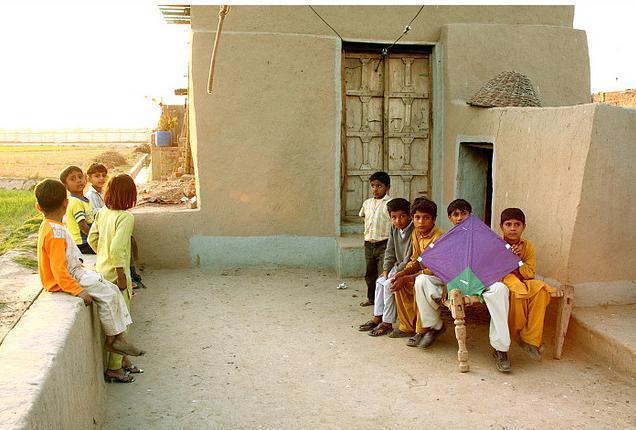
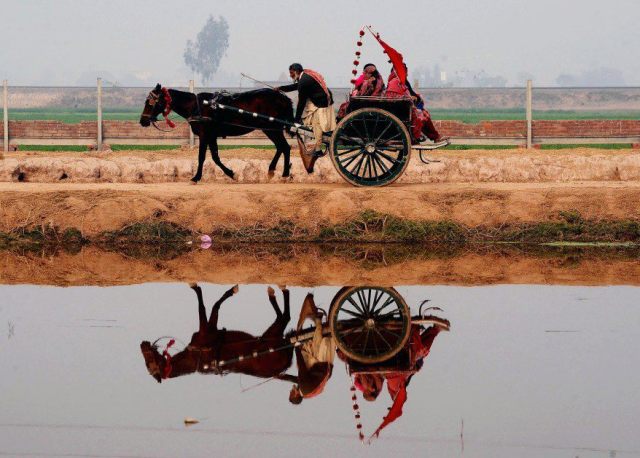
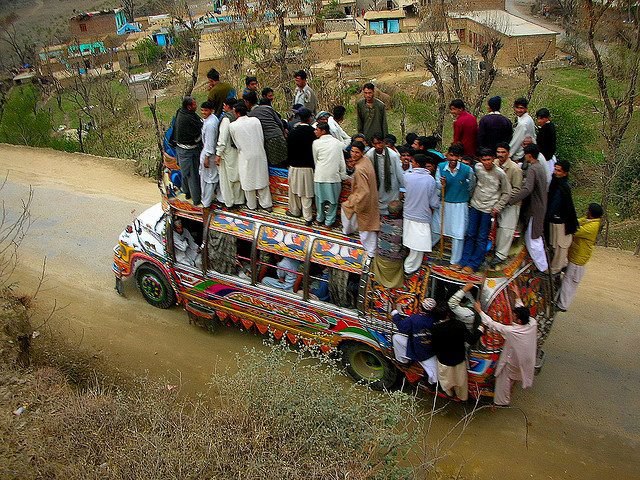
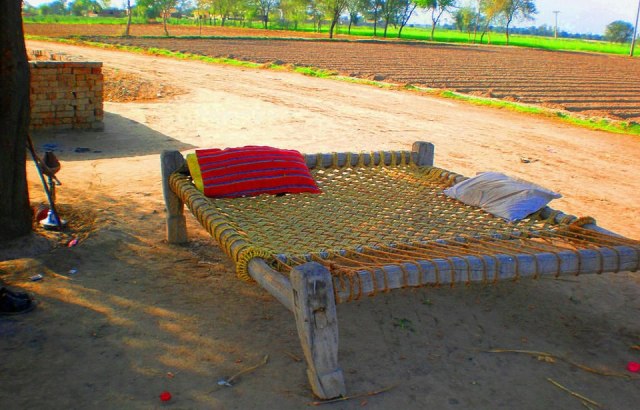

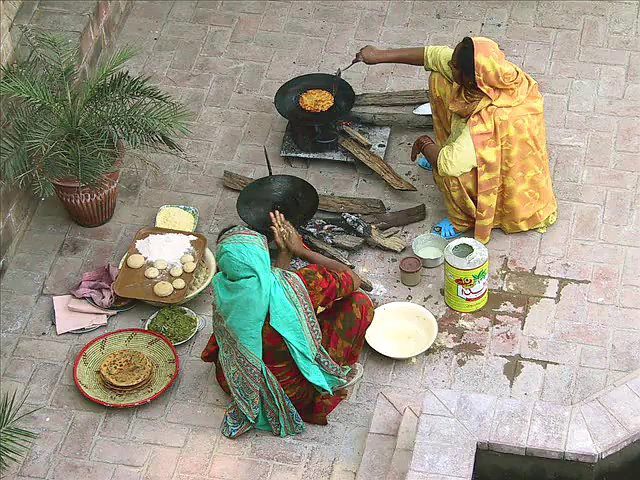



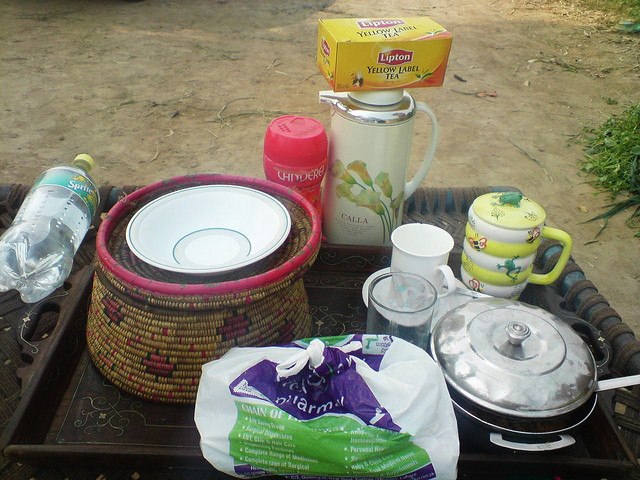
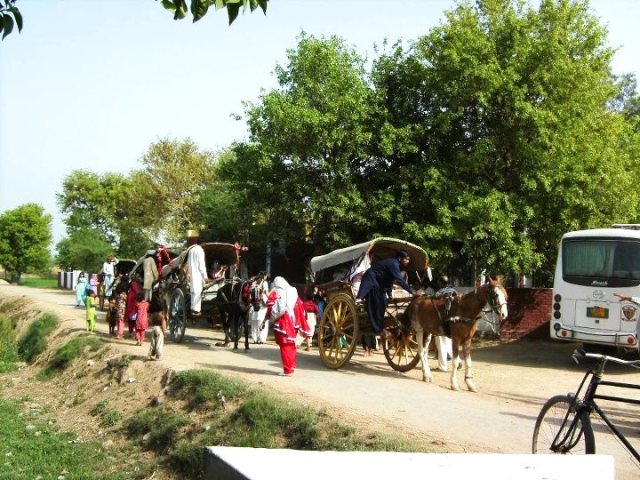
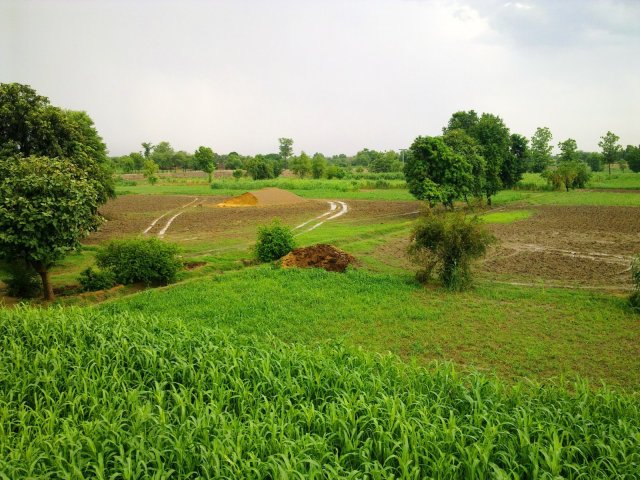
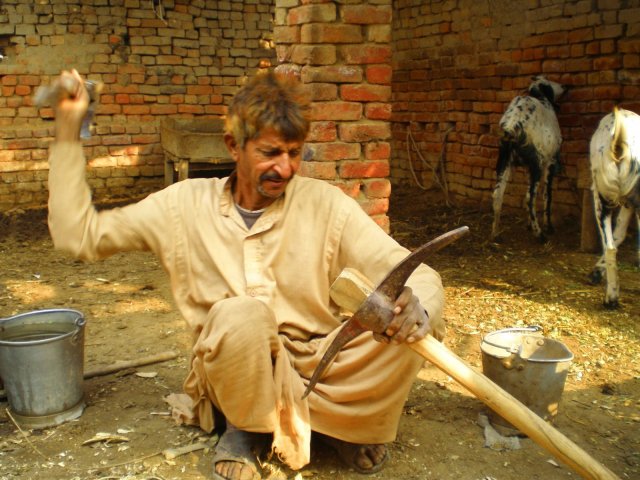
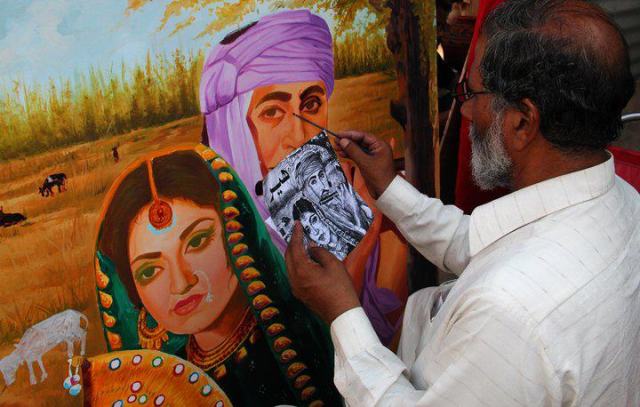
Hello my family member! I wish to say that
this post is amazing, great written and include almost all vital infos.
I would like to see extra posts like this
.
real beauty of pakistan
https://www.facebook.com/media/set/?set=a.680622455306505.1073741833.185525111482911&type=3&uploaded=1
Microsoft has been coy about revealing thee number of Surface
tablets that it has sold thus far. Zalman FTP client 2010 contains an additional feature of logic layer aand therefore every speckfic action can be tracked.
Graphic designers can have Photoshop setup a certain way to optimize their use of
the software.
Very nice !
Bohat acha likha hai or photos ki to baat hi alag hai…Waqai aaj kal k muqable pehle ki zindagi bht pursukun thi…Mujhe aaj b yaad hai dada-dadi k saath tonga me safar karna or jab tongawallah ne 50 paise sawari mangi to dadi ko bht hairani hui k paise barha diye jabke mere liye wo bht mamuli raqm thi 🙂
Abdullah Mukarram from Delhi, India
Really appreciate your effort. Nice work on our lifelines ie the villages or sohni dharti i must say. Keep it up with more pix of rural landscape.
WELL WRITTEN AND BEAUTIFULLY DOCUMENTED